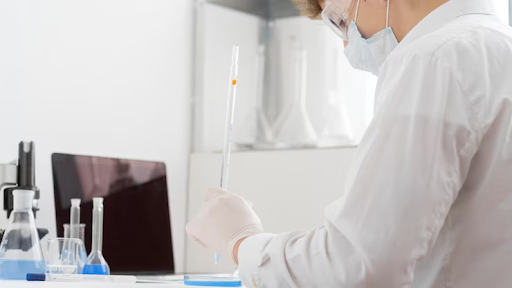Producing and purifying recombinant proteins (proteins made using genetic engineering) can be tricky and time-consuming.
It often takes a lot of effort and money to get high amounts of protein that’s not only pure but also active, meaning it works the way it’s supposed to.
Whether you’re producing your own or looking for ready-to-use solutions, you can also buy active proteins to save time and ensure reliable results.
Here are some quick tips on how to increase the amount of active protein you can produce.
Why Use E. coli?
One of the most common ways to produce proteins in the lab is by using the bacteria E. coli. It’s popular because:
- It’s inexpensive
- It can produce proteins quickly
- It’s good for basic research and testing
But before starting, researchers need to understand the physical and chemical properties of the protein they want to make. This helps them plan the best strategy for expression.
Using tools or special software can help with this. These tools can:
- Analyze the protein sequence
- Check if everything is in the correct order
- Predict how the protein might behave during production
Taking time to do this early on can help avoid problems later and improve the chances of getting more active protein in the end.
These software tools can do more than just check protein sequences. They can also help predict the protein’s structure, such as:
- 3D (tertiary) and 2D (secondary) shapes
- Where signal peptides (which guide proteins into the cell) are located
- Whether the protein will be soluble or form clumps
- Which areas might be unstable or disordered?
- The protein’s stability and hydrophobicity (how it interacts with water)
All this information can help you decide which lab methods to use for producing the protein. Once you’ve gathered these insights—especially if you’re working with complex proteins—you can start adjusting key factors to optimize protein production in E. coli.
The same approach works for custom antibody production or custom protein expression, where fine-tuning conditions is important for success.
Designing Expression Vectors
To make high levels of protein, the design of your expression vector (a type of DNA plasmid used to produce proteins) is really important. You need to include the right parts, arranged in the right way, to help the cell produce your target protein efficiently.
Key Parts of an Expression Vector
One of the most important pieces is the promoter—this controls when and how much protein is made. A good promoter is placed just before (10–100 base pairs upstream of) the ribosome binding site (RBS), and it helps start transcription (the process of copying DNA to RNA).
These promoters often include short DNA sequences placed about 35 base pairs before the transcription start site.
You can choose from many types of promoters, including ones from bacteria or bacterial viruses (bacteriophages). A good promoter should:
- Be strong (high expression when needed)
- Have low activity when not induced
- Be easy to transfer into different E. coli strains
- Be cheap and simple to use
Ribosome Binding and mRNA Design
The distance between the start codon and the Shine-Dalgarno (SD) sequence (part of the RBS) matters too. Keeping this space between 5 to 13 bases helps the ribosome start making protein more efficiently.
You also want to avoid structures in the mRNA (like loops or folds) that can block this process. Using sequences rich in adenine (A) can help keep the area open and accessible.
Ending Transcription
At the end of the gene, a transcription terminator tells the cell where to stop copying RNA. This part often forms a stem-loop structure, which helps protect the RNA and ensures transcription ends properly.
Factors That Affect Protein Expression in E. coli
When designing a system to make proteins, like antibodies, in E. coli, there are many things that can affect how much active protein you end up with.
Choosing the Right Vector
One study showed that, beyond just the basic vector parts (like promoters and ribosome binding sites), the overall efficiency of gene expression plays a big role in how well the system works. Here are a few more important factors:
- Antibiotic resistance genes are often included in plasmids to help select for cells that carry the plasmid.
- The origin of replication in the plasmid controls how many copies of the plasmid are made inside each cell. More plasmids usually mean more protein.
- Sometimes, special DNA elements called replicons are used to further increase plasmid copy numbers, boosting protein production even more.
In the end, the total amount of protein made depends on several things:
- The strength of the promoter
- The number of gene copies (gene dosage)
- How well does translation start
- How stable the mRNA is
The Role of Codon Usage
Every amino acid can be represented by more than one codon (a 3-letter sequence in the gene). However, not all codons are used equally by all organisms.
- E. coli prefers certain codons more than others, depending on the availability of matching tRNA molecules.
- Genes that are highly expressed in E. coli tend to use codons that match the most common tRNAs.
- If a gene contains rare codons that E. coli doesn’t normally use, the cell may struggle to read it properly. This can lead to:
- Wrong amino acids being inserted
- Early stopping of translation
- Shifting the reading frame, making the protein unusable
This is called codon bias, and it’s important to optimize codons when expressing foreign (heterologous) genes in E. coli.
Protein Folding and Location
Proteins produced in E. coli can end up in different parts of the system:
- Cytoplasm (inside the cell)
- Periplasm (space between inner and outer membranes)
- Growth medium (outside the cell, if secreted)
Cytoplasmic Expression
Most people use cytoplasmic expression because it typically gives high yields.
However, at low temperatures (often used to reduce stress), proteins may fold incorrectly and clump together into inclusion bodies—insoluble masses of misfolded protein.
While inclusion bodies make purification easier, it’s not guaranteed that the protein will refold correctly after purification to become active again.
Secreted Expression
Some scientists have explored ways to secrete proteins directly into the growth medium, which may help with folding and purification.
This method is still complicated and not widely available in commercial systems.
By carefully managing codon usage, plasmid design, and where the protein is directed in the cell, researchers can greatly improve the chances of producing active, usable proteins in E. coli.


